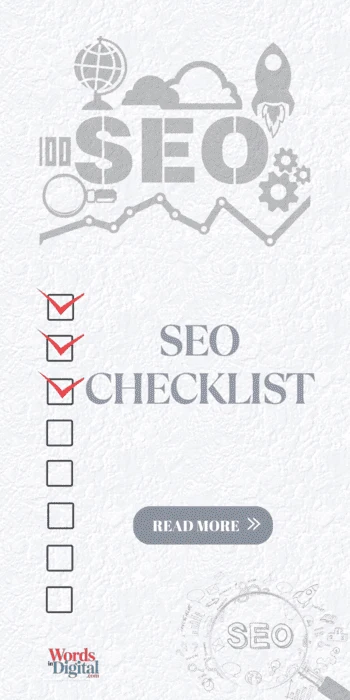
You can listen to the audio summary of this article, which I prepared with NotebookLM, on Spotify!
Creating quality content in the online world is vital for attracting users’ attention and ensuring visibility on search engines.
This process requires a multifaceted approach that encompasses not only creative writing skills but also SEO (Search Engine Optimization) principles and Google’s quality expectations.
Contents
1. What is Quality Content?
Quality content is defined as:
- useful to users,
- accurate,
- reliable,
- relevant,
- well-researched (e.g., Google Scholar – JSTOR – Statista),
- and carefully prepared.
From Google’s perspective, quality content should be created to benefit people, rather than solely focusing on improving search engine rankings.
From Google’s perspective, quality content should be created primarily to benefit people, rather than to boost search engine rankings.
Content:
- It should meet the user’s search intent,
- Provide original information, research, or analysis,
- Reflect the author’s expertise and first-hand experience,
- Provide significant value compared to other pages.
It should also provide a good page experience (loading speed, readability, mobile compatibility).
From a brand perspective, content should:
- Be consistent with the brand’s voice and goals,
- Reflect its identity and values,
- Meet the needs of the target audience,
- Enhance its reputation.
1.1. Historical Development of Google’s Quality Guidelines
Google’s emphasis on quality has increased over the years:
- 2008: Focus on search quality and reliability began.
- 2011: The E-A-T concept emerged.
- 2017: Greater emphasis was placed on YMYL topics.
- 2018 (Medic Update): The importance of E-A-T increased, particularly affecting health websites.
- 2022 (E-E-A-T): The “Experience” factor was added.
1.2. What is E-E-A-T: Google’s Trustworthiness Framework
Google uses a framework called E-E-A-T (Experience, Expertise, Authoritativeness, and Trustworthiness) to evaluate content quality. E.E.A.T. is a systematic answer to the question, “Who wrote the content and why should I trust it?”
This concept was originally known as “E-A-T,” but was updated to E-E-A-T on December 15, 2022, with the addition of the “Experience” factor.
1.2.1. Experience
This means that the content creator has personal, first-hand experience with the subject.
For example:
- A person writing a product review should have used the product,
- A person preparing a travel guide should have personally visited the place mentioned.
This adds credibility to the content.
1.2.2. Expertise
This refers to the author having in-depth knowledge, skills, or qualifications on the subject.
Google:
- Evaluates the author’s reputation, background, and references to reliable sources.
- Expertise should be demonstrated through author profiles, academic qualifications, and professional connections.
1.2.3. Authority (Authoritativeness)
This refers to the author or site producing the content being recognized as a respected authority in their field.
Supporting factors:
- Being associated with reputable organizations,
- Qualifications, positive ratings, reviews,
- Being referenced by other experts,
- Strong backlinks.
1.2.4. Trustworthiness
This refers to the content, the creator of the content, and the site being accurate, honest, impartial, and secure.
Factors that increase trustworthiness:
- Transparency (information about the site owner and content creator),
- Clear communication and customer service information,
- Maintaining a positive reputation,
- Ethical content practices.
Additionally:
- Use of HTTPS,
- Privacy policies,
- Return processes,
- Providing physical addresses also increases trust.
E-E-A-T, while not a direct ranking factor, indirectly influences Google’s algorithms.
1.3. YMYL (Your Money or Your Life) Topics
YMYL stands for “Your Money or Your Life” and covers topics where misinformation could have serious consequences for users’ health, safety, happiness, or financial situation.
Topics in this category include:
- Health and wellness (medical advice),
- Finance and money (investments, banking),
- News and current events (politics, science),
- Government and law (legal advice),
- Shopping and e-commerce (product reviews, payment information).
Websites covering YMYL topics are expected to demonstrate a very high level of E-E-A-T.
2. User-Focused Content & Search Engine-Focused Content
Google’s ranking systems reward content that benefits users.
2.1. User-Focused Content
- Aims to directly benefit the target audience.
- First-hand experience and comprehensive knowledge should be demonstrated in the content.
- Sites should produce content with a specific primary purpose.
- Users should achieve their goals after reading the content.
2.2. Search Engine-Focused Content
Content whose primary purpose is to manipulate rankings.
Examples:
- Copying other people’s content,
- Writing without knowledge just because it is trending,
- Repurposing old content by updating dates,
- Writing to reach a certain word count.
2.3. Google’s “Who, How, Why” Approach
Google recommends that content creators ask themselves the following questions:
Who: It should be clearly stated who created the content.
How: Information should be provided about how the content was produced.
Why: The purpose should be to add value to the user, not just to attract traffic.
3. Tips for Producing Quality Content
There are various strategies for creating quality content that meets E-E-A-T standards:
1.Write for Your Readers: Conduct comprehensive keyword research to understand your target audience’s interests, problems, and the information they are looking for.
2. Target Search Intent: Align your content focus and calls to action (CTAs) with users’ intentions to obtain information or perform actions.
3. Be readable and engaging: Structure your text with headings, paragraphs, and white space. Limit difficult words and long sentences. Use a conversational tone.
4. Keep your content up to date: Review and update your content regularly to build trust and maintain SEO performance.
5. Pay Attention to Site Structure: Create a structure that makes it easy for users and search engines to find content.
6. Conduct Comprehensive Research: Be knowledgeable. Rely on data and sources for credibility.
7. Provide Informational Value: Instead of summarizing others’ content, offer new value with original insights and research.
8. Use Visuals: Use relevant visuals to break up text, draw attention, and simplify the topic. Avoid generic stock images.
9. Avoid Grammar and Spelling Errors: Carefully review before publishing. Use tools like Grammarly or Hemingway Editor.
10. Manage Your Brand Reputation: Manage your presence on social media and review platforms, and showcase positive references.
11. Display Author Information: Share authors’ expertise and contact information on “About Us” or “Our Team” pages.
12. Get Recognition and Reviews from Experts: Add expert opinions to your content or invite experts as guest authors.
13. Create Authoritative Backlinks: Produce valuable content and build relationships in the industry to get backlinks from reputable sites.
14. Don’t Neglect Technical SEO: Make sure your website is error-free and secure, and provides a good page experience (e.g., page load speed, readability, mobile compatibility). Perform regular technical audits.
15. Make a Strong Opening: Capture the reader’s attention immediately with strong headlines and attention-grabbing introductions.
16. Make It Actionable: Make the content actionable by providing step-by-step processes and concrete examples.
17. Avoid Being Boring: Remove unnecessary words and repetitions. Keep the content concise and direct.
18. Make the Reader the Focus: Clearly state how the information will benefit the reader.
19. Focus on a Specific Niche: Stay true to your area of expertise and avoid creating content on topics you are not knowledgeable about.
4. Topical Authority: Becoming an Authority on the Subject
In the past, targeting one keyword per page was sufficient. Now, Google looks at how deeply you have explored a subject.
For example, if you run an SEO blog, you should cover not only “What is SEO?” but also
- Technical SEO,
- On-page SEO,
- Backlink strategies,
- Keyword research methods,
- Content optimization,
- AI-powered SEO…
- …and dozens of other subtopics.
This way, Google will recognize you as an “authority on the subject.
Strategy suggestion: Make the main topic headings your main page, and link the subheadings to each other with supporting content in a “topic cluster” format. This content architecture will boost your rankings.
5. Evergreen Content and Content Refresh
No matter how good your content is, it can lose its relevance over time. Therefore:
- Producing evergreen content,
- Updating underperforming content,
- Making additions in light of new developments,
They are critical to SEO success.
Example: Instead of a time-based piece of content such as “SEO Trends 2025,” creating a page titled “SEO Trends: Developments from Past to Present (Continuously Updated)” will satisfy both users and Google.
Content Formats: Going Beyond Text
Writing blog posts alone is no longer enough. Content needs to be diversified:
- Infographics → simplify complex data
- Videos → capture visually oriented users
- Podcast transcripts → contribute to SEO
- Interactive content (quizzes, calculators) → keeps users engaged longer
Google perceives content format diversity as a positive signal.
5.1. Content Format Based on Search Intent
It’s not just what you write, but how you present it that matters.
- For question-focused searches: Clear and concise answers + FAQ section
- For product research: Comparison tables + user reviews
- For navigational searches: On-page navigation + internal links
- For content with a call to action: Strong CTA and simple design
When you accurately understand search intent and design your content format accordingly, your SEO performance will significantly improve.
6. The Role of Artificial Intelligence in Content Writing
ChatGPT and other artificial intelligence tools can assist with processes such as:
- Outlining,
- Researching,
- Brainstorming.
However:
- Content must be reviewed by a human,
- It must be aligned with the brand’s voice.
Google emphasizes that content created solely by artificial intelligence cannot provide high E-E-A-T on its own, particularly due to the “Experience” factor.
Conclusion
In light of this information, creating high-quality, user-focused content is an indispensable strategy for:
- SEO success,
- Brand reputation,
- User satisfaction.
FINAL WORD:
When you prioritize quality in content creation, you establish a presence not only in search engines but also in readers’ minds. Over time, readers begin to see you as a source, a guide, and an expert.
And most importantly, quality content is the cornerstone of building a sustainable digital presence.
You can share this article on social media or get a summary with ChatGPT / Perplexity:


 Share
Share X
X ChatGPT
ChatGPT Perplexity
Perplexity









